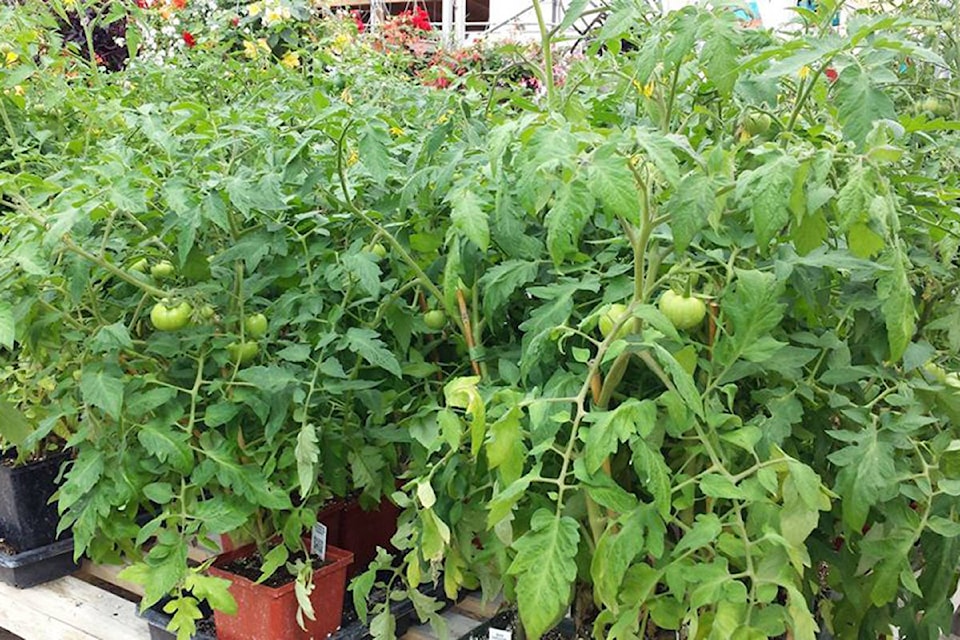Jean Atkinson
Richbar Golf and Gardens
Today is April 4, and I am sitting down to write some gardening articles. There are still two feet of snow in our yard, and we have just come through some of the lowest night temperatures for this time of year. Of course, there is something even stranger than that this spring: COVID -19. I have no idea what the circumstances of the day will be when this is published, but I hope it will be promising news. The arrival of spring is one thing to look forward to. Getting back into our gardens — raking, digging, planning and planting — will be good for our bodies and souls.
This pandemic has certainly caused us to focus on food supply. The Victory Gardens of World War I and II encouraged families to grow their own fruit and vegetables to supplement their diets during times of rationing. At this time, other areas in the province are seeing a resurgence of gardening, and I expect it will be the same here. Something positive can come of this, and more people might become hooked on one of the most valuable pastimes of all time – gardening.
So how do you get started if you are new to this? What if you don’t have the space to start a garden? Here are some basic requirements in planting a garden.
It begins with three main components: location, soil and water. Mother Nature of course has the final say. So, if you are dealing with a blank slate, you want your garden to receive a minimum of six hours of direct sunlight. However, spinach, Swiss chard, radish and leaf lettuce will tolerate light shade. Consider the distance the garden is from the house; if its too far, it becomes more of a chore and you will find excuses….. like Netflix.
If you are new to the Cariboo and new to gardening, welcome to our “Cariboo Clay.” Our clay soils tend to drain poorly and warm up slowly in the spring. The best solution for tough soil conditions is to add the recommended depth (30 centimetres/12 inches for vegetables) of prepared topsoil over a scarified base or to work copious amounts of organic material, such as peat soil or well-rotted manure, into the existing soil.
A good garden soil usually consists of a mix of sandy soil and organic matter, such as compost manure or peat. Those perfect rich, friable soils take time, so don’t give up in your first year. Amending the soil is a yearly process and key to a successful planting project.
In heavy soil, we find the best results are obtained when one creates raised mounds. Add six inches of organic matter, add a well balanced fertilizer according to the recommendations to your base, and rototill into the original soil. Raised beds also warm up quicker in the spring and drain faster.
Now, what to plant. The easiest vegetables to grow include beans, beets, kohlrabi, kale, leaf lettuce, parsnip, peas, potatoes, radishes, spinach and Swiss chard. These take the least effort, but it’s hard to stop there when there are tomatoes, onions, carrots, peppers, squash and much more to try. Also consider how much space you have, as plants such as squash, pumpkins, cucumbers and corn take up a lot of room.
You have now gone to the effort and expense to prepare and plant this garden; you must keep a pact to water it. It is very important to water adequately from the time of sowing until a couple of weeks after these new seedlings have emerged. Then, as the plants are growing vigorously, the moisture needs to be applied on a regular basis. Inconsistent watering results in problems such as blossom end rot on tomatoes or splitting of carrots. Watering in the morning is ideal, as the water doesn’t evaporate and the foliage has time to dry, which reduces disease problems. A drip irrigation system is the ticket, as it can be set up to a timer.
Mother Nature can put the best of well-laid plans into a tailspin. This is where you get into the habit of checking what the nighttime lows are going to be. In the past, Cariboo folks typically waited until the long weekend in May to plant their garden, as, hopefully, the chance of frost has passed. If you want to get the jump on planting earlier, I suggest using row covers. This lightweight fabric provides three to four degrees of frost protection, acts as a barrier to insects, warms the soil, protects from winds and allows water, light and air to penetrate. Remove it once plants begin to bloom, otherwise pollination won’t occur.
I hope these tips will help make your first garden a success. Hopefully this new-found green thumb produces a bumper crop. If you have an excess of vegetables, please consider thanking some of your frontline friends or elderly shut-ins with a share of your bounty.
Enjoy those delicious vegetables that YOU grew. Take pleasure in the earth. Binge weeding is good exercise for the body and soul.
The next article will cover the basics of container gardening.
READ MORE: Gardening FAQs with Richbar Golf and Gardens
editor@quesnelobserver.com
Like us on Facebook and follow us on Twitter
